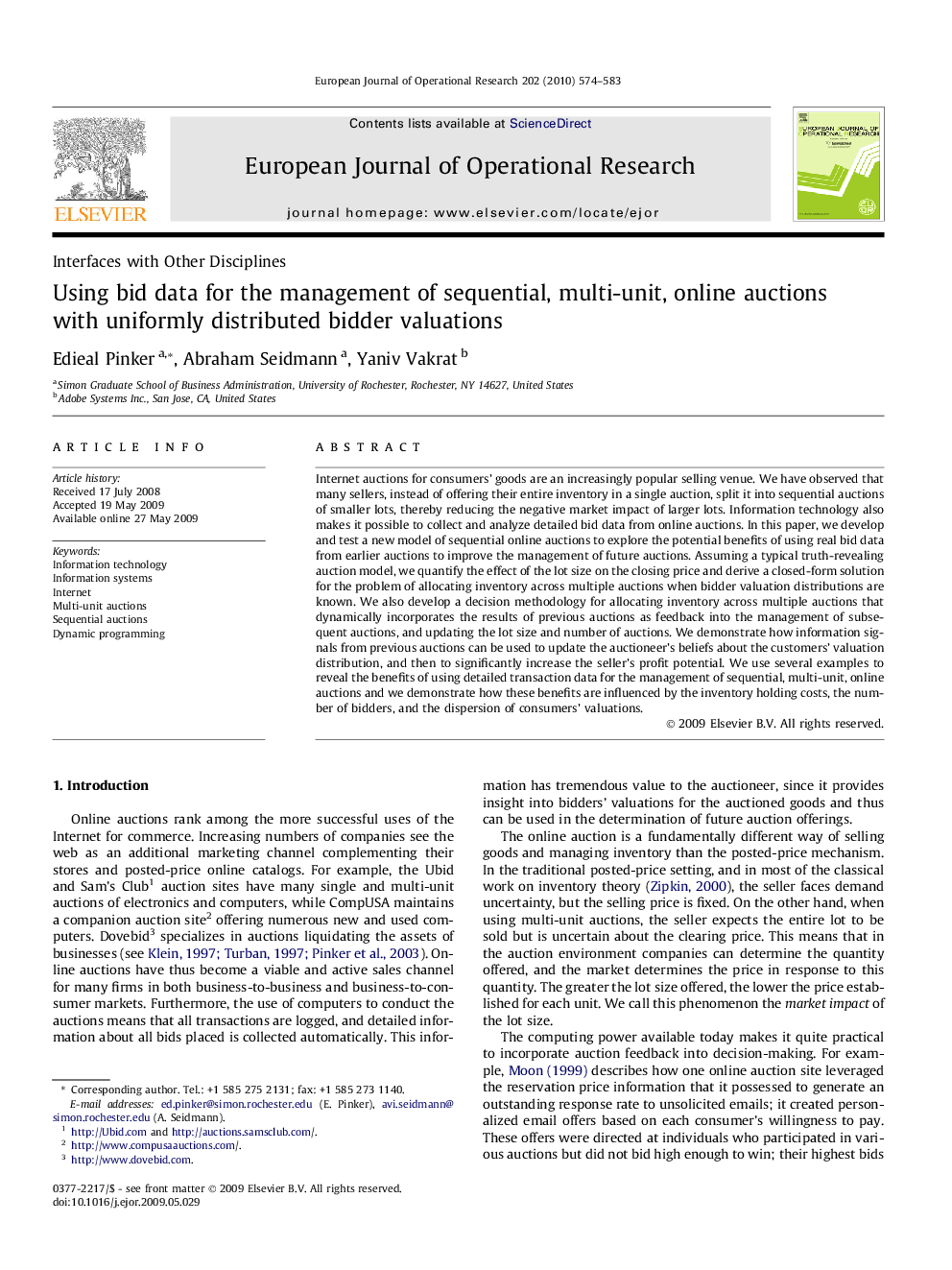| Article ID | Journal | Published Year | Pages | File Type |
|---|---|---|---|---|
| 482294 | European Journal of Operational Research | 2010 | 10 Pages |
Internet auctions for consumers’ goods are an increasingly popular selling venue. We have observed that many sellers, instead of offering their entire inventory in a single auction, split it into sequential auctions of smaller lots, thereby reducing the negative market impact of larger lots. Information technology also makes it possible to collect and analyze detailed bid data from online auctions. In this paper, we develop and test a new model of sequential online auctions to explore the potential benefits of using real bid data from earlier auctions to improve the management of future auctions. Assuming a typical truth-revealing auction model, we quantify the effect of the lot size on the closing price and derive a closed-form solution for the problem of allocating inventory across multiple auctions when bidder valuation distributions are known. We also develop a decision methodology for allocating inventory across multiple auctions that dynamically incorporates the results of previous auctions as feedback into the management of subsequent auctions, and updating the lot size and number of auctions. We demonstrate how information signals from previous auctions can be used to update the auctioneer’s beliefs about the customers’ valuation distribution, and then to significantly increase the seller’s profit potential. We use several examples to reveal the benefits of using detailed transaction data for the management of sequential, multi-unit, online auctions and we demonstrate how these benefits are influenced by the inventory holding costs, the number of bidders, and the dispersion of consumers’ valuations.
